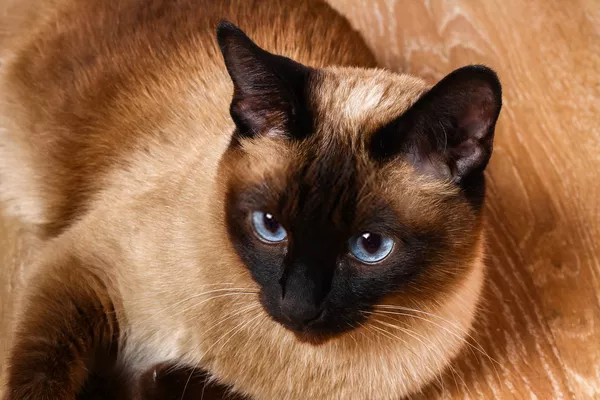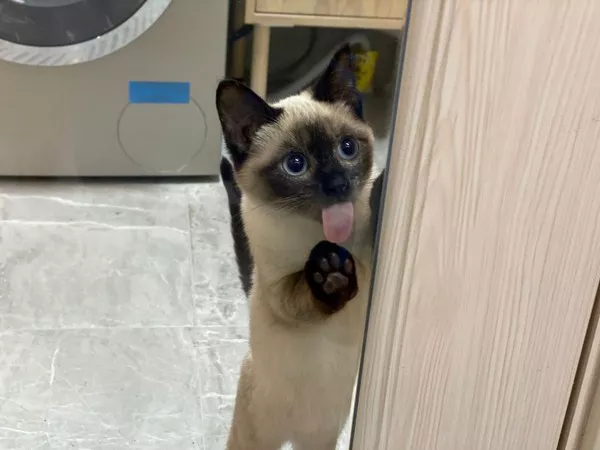Siamese cats, with their striking blue almond-shaped eyes and distinctive coat pattern, are known for more than just their good looks. These feline companions are celebrated for their expressive and vocal nature, often described as “talkative” or even “crying.” While their melodious voices can be endearing, it’s common for Siamese cats to communicate frequently and loudly, leaving many cat lovers wondering: why do Siamese cats cry so much? In this article, we will delve into the world of Siamese cats, exploring the reasons behind their chattiness and how to cater to their unique needs.
The Siamese Cat: A Brief Overview
Before delving into their vocal habits, let’s get acquainted with Siamese cats. These elegant felines are characterized by their striking features, which include:
Coat Color: Siamese cats have a coat color pattern known as “point coloration,” which means their extremities (ears, face, paws, and tail) are darker than the rest of their bodies. This coat pattern is caused by a temperature-sensitive enzyme that inhibits coloration in cooler areas of the body.
Body Type: Siamese cats have a sleek, slender, and graceful build, known as a “foreign” body type. They typically have long, graceful legs, and they are surprisingly muscular for their size.
Personality: Siamese cats are renowned for their outgoing, social, and affectionate nature. They are known to form strong bonds with their human companions and thrive on interaction and attention.
Understanding Siamese Cats’ Vocal Nature
The vocal nature of Siamese cats is legendary. They are often considered one of the most talkative cat breeds, and their vocalizations can range from gentle purring to loud, plaintive cries. But why are Siamese cats so vocal? Here are several key factors that contribute to their chattiness:
Breed Characteristics: Siamese cats have been bred for their vocal personalities. Over generations, breeders have selected cats that are more communicative and expressive, resulting in the Siamese cat‘s trademark chattiness.
Social Creatures: Siamese cats are highly social and crave interaction with their human companions. They use their voices to communicate their needs, emotions, and desires. Talking to their humans is a way for them to connect and engage.
Attention Seekers: These cats are known to be attention seekers. They may vocalize to capture your focus or to express their feelings, such as happiness, excitement, or even frustration. If a Siamese cat feels ignored, it may become even more vocal to gain your attention.
Expressing Discomfort: Siamese cats may use vocalization to communicate physical discomfort or pain. If you notice a sudden change in their vocal patterns, it’s essential to consider that it might be related to a health issue, and a visit to the veterinarian is in order.
Emotional Expression: Siamese cats can be particularly emotionally expressive. They may cry when they are lonely, anxious, or stressed. Their vocalizations can serve as an outlet for pent-up emotions.
Environmental Sensitivity: These cats are exceptionally sensitive to their environment. Changes in routine, new people, or unfamiliar surroundings can trigger heightened vocalizations as they express their discomfort or curiosity.
Meeting the Needs of Siamese Cats
Catering to the vocal nature of Siamese cats is essential to ensure their happiness and well-being. Here are some tips to help meet their unique needs:
Interaction and Engagement: Siamese cats thrive on social interaction. Spend quality time playing, petting, and talking to your Siamese cat. Providing mental stimulation with toys and puzzles can also be beneficial.
Consistent Routine: Maintain a consistent daily routine to help reduce anxiety in your Siamese cat. These cats appreciate predictability and structure in their environment.
Environmental Enrichment: Create an enriched environment with climbing structures, scratching posts, and window perches. Siamese cats enjoy observing their surroundings, and this can help reduce their stress and need for vocalization.
Quiet Time: Provide quiet spaces where your Siamese cat can retreat when they need solitude. These cats can become overstimulated, and a peaceful place to relax is crucial.
Healthcare: Regular vet check-ups are essential. Siamese cats can be prone to certain health issues, so it’s important to address any health concerns promptly to ensure they are not expressing discomfort through vocalization.
Understanding Their Vocalizations: Pay attention to the different types of vocalizations your Siamese cat uses. This can help you understand their needs and emotions better.
In conclusion, Siamese cats are renowned for their vocal and expressive nature. While their constant communication can be charming, it’s vital to understand that their vocalizations are their way of connecting with their human companions, expressing their emotions, and communicating their needs. By providing social interaction, a consistent routine, and a stimulating environment, you can ensure that your Siamese cat’s vocal nature is both understood and celebrated.

























